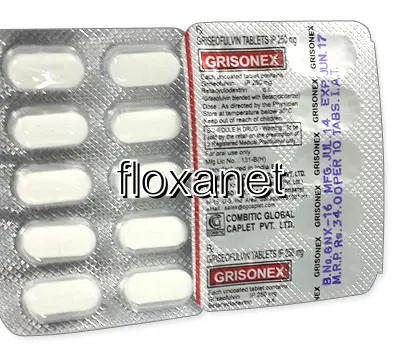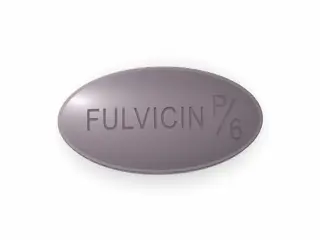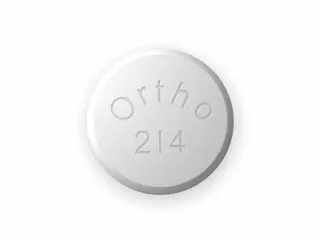Buy Griseofulvin Online in Australia
| Package | Dosage | Price | Price per Dose | |
|---|---|---|---|---|
| Dosage: 250mg | ||||
| 360 pill | 250mg | AUD514.72 | AUD1.43 | |
| 180 pill | 250mg | AUD273.11 | AUD1.51 | |
| 120 pill | 250mg | AUD193.27 | AUD1.62 | |
| 90 pill | 250mg | AUD159.65 | AUD1.76 | |
| 60 pill | 250mg | AUD121.84 | AUD2.04 | |
| 30 pill | 250mg | AUD69.31 | AUD2.29 | |

Griseofulvin Description
Overview of Griseofulvin
Griseofulvin is an antifungal medication commonly used to treat various fungal infections of the skin, hair, and nails. It is derived from a mold called Penicillium griseofulvum. The drug works by inhibiting fungal cell division, which helps to eliminate the infection. Its mechanism involves disrupting the formation of the fungal mitotic spindle, effectively preventing fungi from replicating. This medication has been relied upon for decades and remains an important option in antifungal therapy, especially for dermatophyte infections.
Uses and Indications
Griseofulvin is primarily prescribed for persistent or severe fungal infections that affect the skin, hair, and nails. Common conditions treated with this medication include tinea corporis (ringworm), tinea capitis (scalp ringworm), and onychomycosis (fungal nail infections). It is most effective when used to treat dermatophyte infections that are resistant to topical treatments or have spread extensively. The medication is often chosen for its ability to penetrate the keratin in nails and hair, reaching the infection sites that topical agents might not effectively access.
Dosage and Administration
The dosage of Griseofulvin depends on the severity of the infection, patient's age, weight, and overall health. Typically, treatment involves daily oral doses divided into one or two administrations. It is important to take the medication with food or a fatty meal to enhance absorption. Duration of treatment can vary from several weeks to months, particularly in cases of nail infections, which require longer therapy. It is essential to follow the healthcare provider's instructions closely and complete the full course of treatment, even if symptoms improve earlier.
Possible Side Effects
While Griseofulvin is generally effective, it can cause certain side effects. Common adverse reactions include gastrointestinal discomfort such as nausea, vomiting, and abdominal pain. Some people may experience headache, dizziness, or fatigue. Rarely, allergic reactions can occur, presenting as rash or swelling. Liver function tests might be recommended by your doctor during prolonged therapy, as the medication can affect liver health. It is important to report any unusual symptoms or side effects to your healthcare provider promptly.
Precautions and Interactions
Before starting Griseofulvin, patients should inform their doctor about any existing liver problems or allergies. The medication may interact with other drugs, such as oral anticoagulants, birth control pills, and alcohol. These interactions can affect the efficacy of treatments or increase the risk of adverse effects. Pregnant women and nursing mothers should consult their healthcare provider before using this medication, as safety during pregnancy is not fully established. Additionally, it is advisable to avoid alcohol consumption during treatment to reduce liver strain and improve medication effectiveness.
Effectiveness and Patient Feedback
Many patients have reported positive results with Griseofulvin, especially in treating stubborn fungal infections resistant to topical therapies. The medication’s ability to reach deep into keratinized tissues makes it particularly effective for nail infections. However, some users experience the need for extended treatment periods before seeing improvement. Patience and adherence to prescribed regimens are crucial for successful outcomes. Patients often appreciate the convenience of an oral medication compared to topical treatments, particularly for extensive or resistant infections.
Summary
Overall, Griseofulvin remains a reliable and effective antifungal option for treating various dermatophyte infections. When used correctly under medical supervision, it can provide significant relief from persistent fungal conditions. Its ability to penetrate keratin tissues makes it especially valuable for nail and scalp infections. As with any medication, it’s important to monitor for side effects and follow healthcare provider instructions closely to ensure safe and effective therapy.



